Readings
-
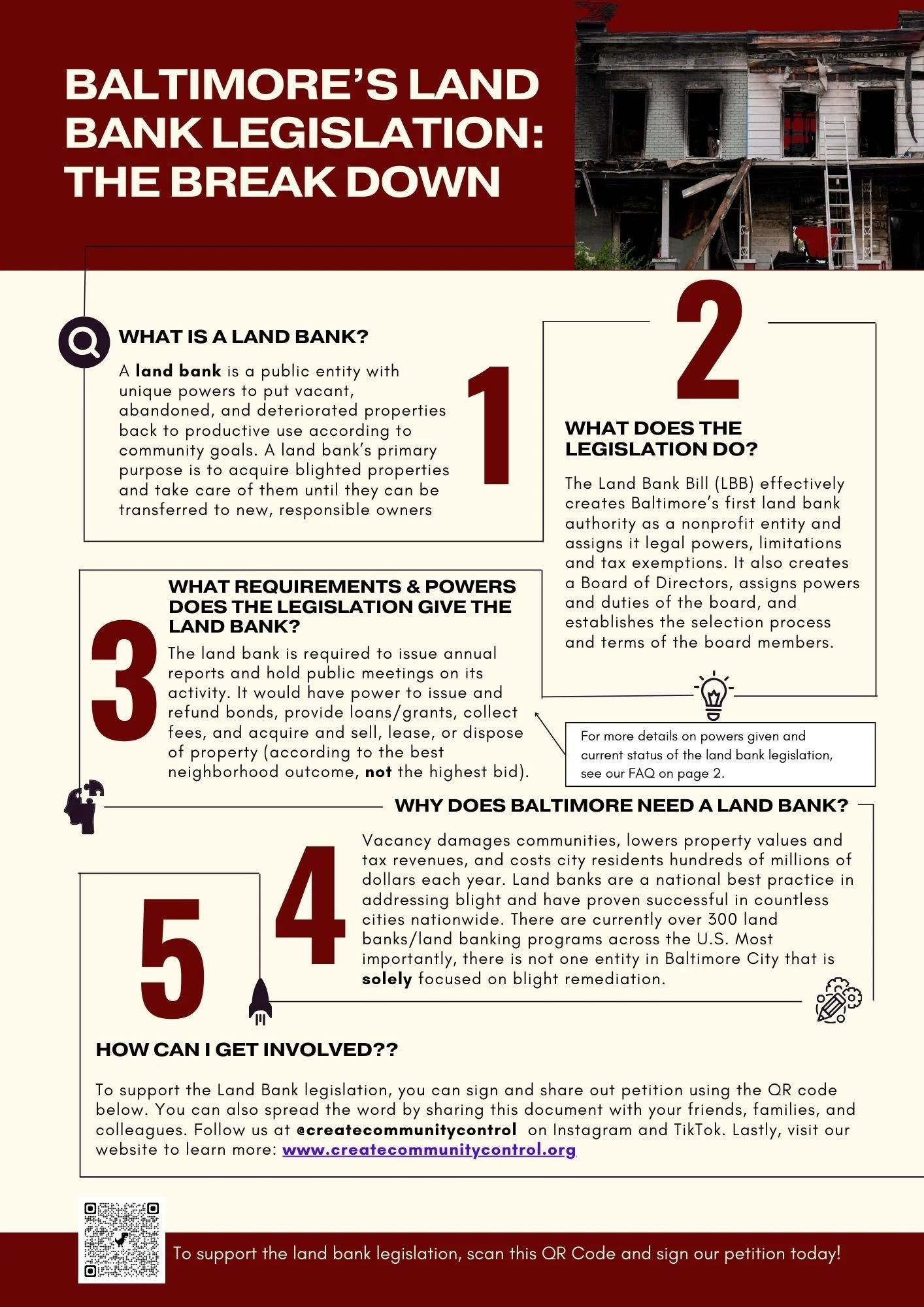
A Breakdown of Baltimore's Land Bank Legislation
Have questions about Baltimore’s pending land bank legislation? Take a quick review of our one pager which includes a FAQ page.
-
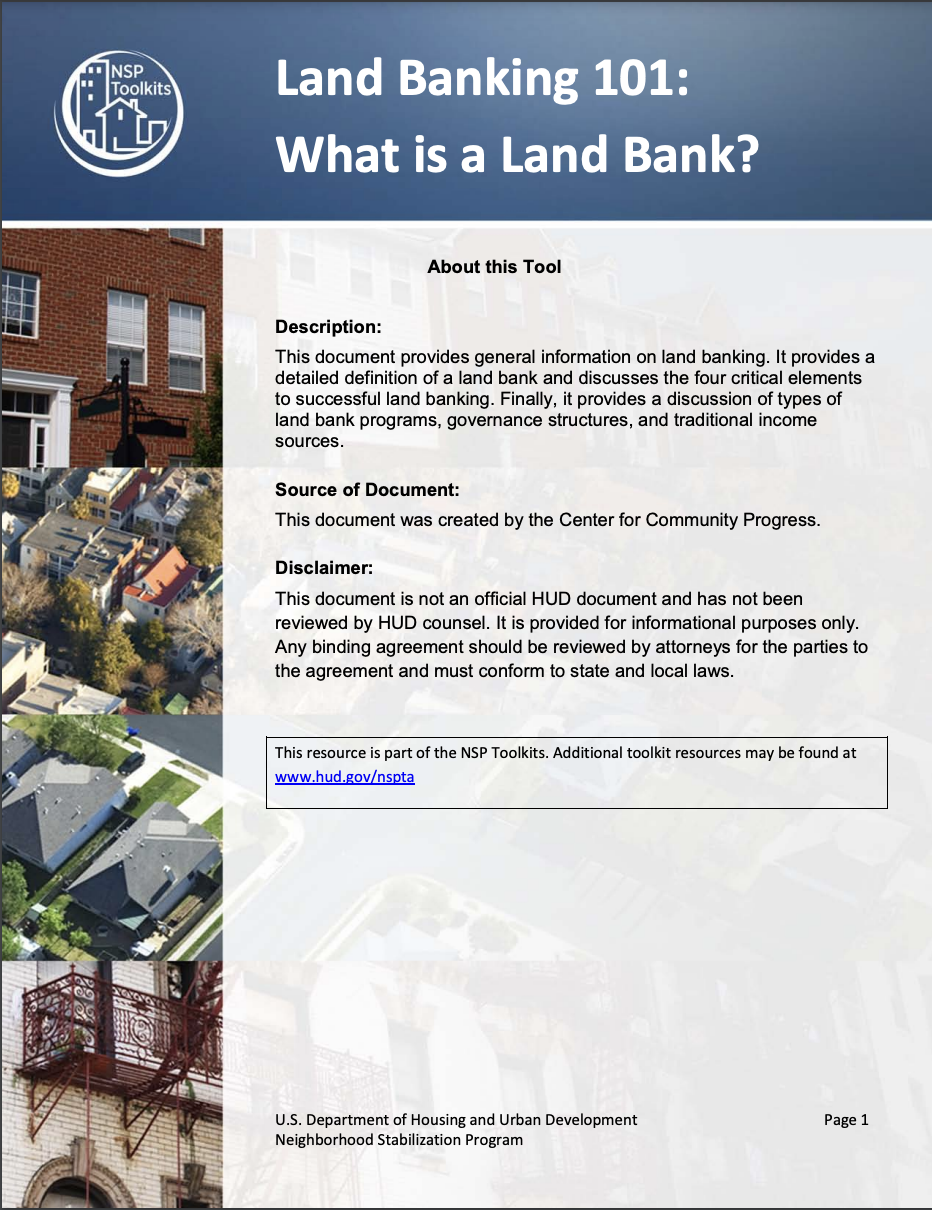
Land Banking 101: What is a Land Bank?
This document provides general information on land banking. It provides a detailed definition of a land bank and discusses the four critical elements to successful land banking. Finally, it provides a discussion of types of land bank programs, governance structures, and traditional income sources.
-

Land Banks and Land Banking, 2nd Edition The Authoritative Resource on Modern Land Banking
Land Banks and Land Banking, 2nd Ed., provides clear historic context about the development of land banking and elucidates its rapid evolution. Readers will also find an expanded trove of practical resources, including extensive guidance on creating and operating a land bank, template state enabling legislation, and sample administrative policies. It is an essential read for anyone interested in discerning whether a land bank is the right tool for their community, and the fundamentals of how land banks work.
-
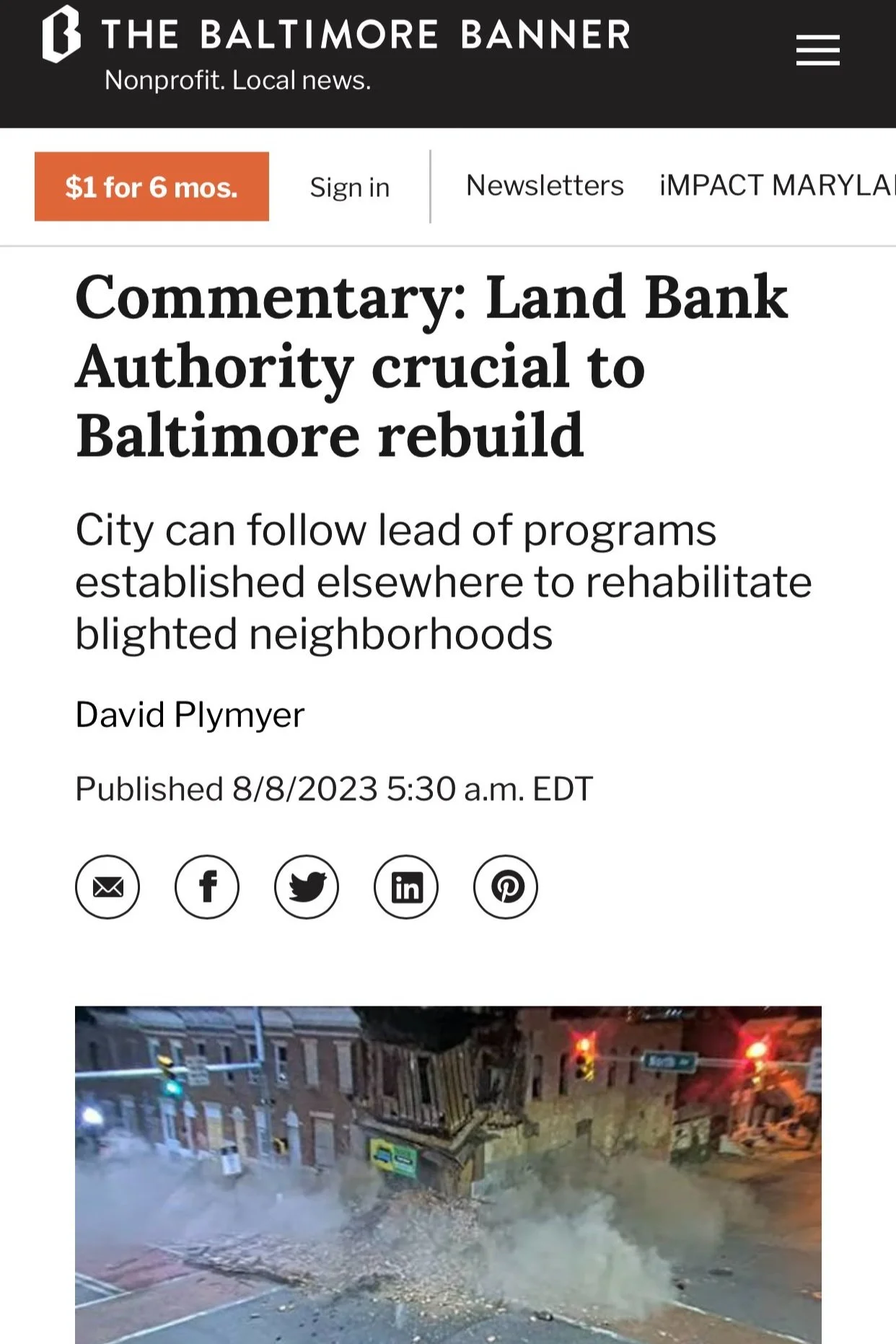
Commentary: Land Bank Authority Crucial to Baltimore Rebuild
Baltimore needs to establish a Land Bank Authority to help reduce the number of abandoned and distressed houses, says David Plymyer, who retired as Anne Arundel County attorney in 2014, and now writes about law and government.
-

The Anatomy of Baltimore’s Blight: Analysis of Policy and Practice Creating a Pathway for Community
The Anatomy of Baltimore’s Blight: Analysis of Policy and Practice Creating a Pathway for Community Progress report aims to provide an examination of how residents and communities prioritize and address property issues, and what tools (policies, practices, funding, etc.) are needed to execute their work toward blight remediation more comprehensively.
-

The Costs of Baltimore’s Vacant Housing
In The Costs of Baltimore’s Vacant Housing, Mary Miller and Mac McComas of Johns Hopkins 21st Century Cities Initiative estimate that Baltimore’s vacant housing accounts for at least $100 million in lost tax revenue annually and an additional $100 million in annual public expenses. These costs are magnified by public health impacts on residents and heightened crime, less measureable effects but also very real costs.
-
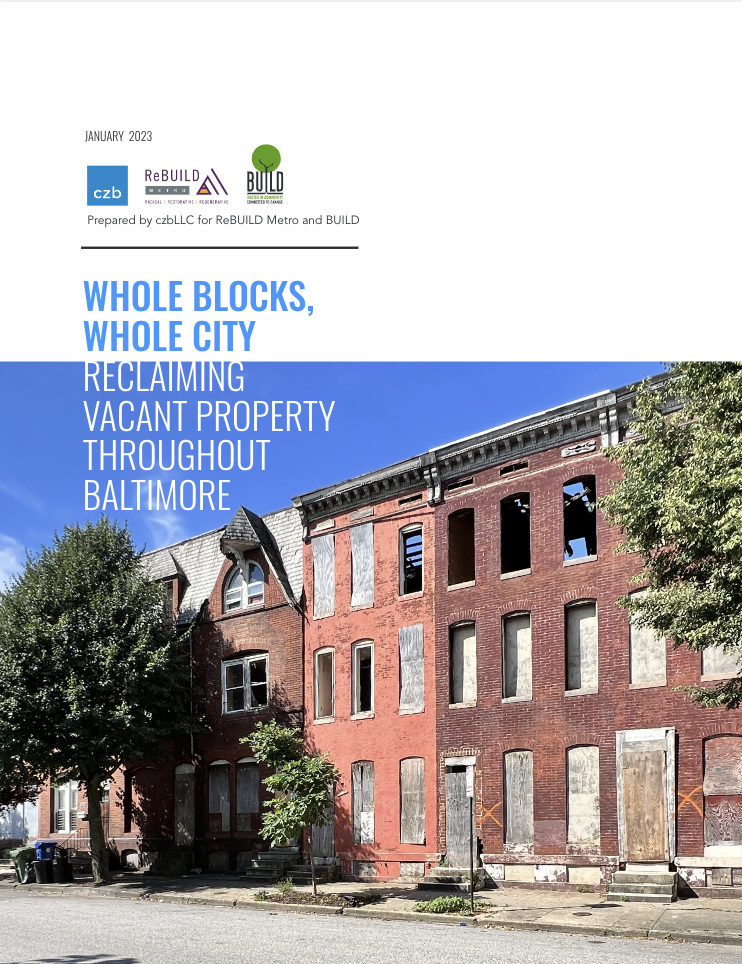
WHOLE BLOCKS, WHOLE COMMUNITY: RECLAIMING VACANT PROPERTY THROUGHOUT BALTIMORE
Despite decades of effort and noteworthy progress on vacant property reclamation, Baltimore’s abandonment crisis has persisted. There remain over 14,000 vacant properties in Baltimore, along with over 21,000 vacant lots and over 34,000 nearby at-risk properties. The study—Whole Blocks, Whole City—analyzed the scale of the crisis in unprecedented detail. It also offers bold and actionable steps for how the crisis can be resolved.
-
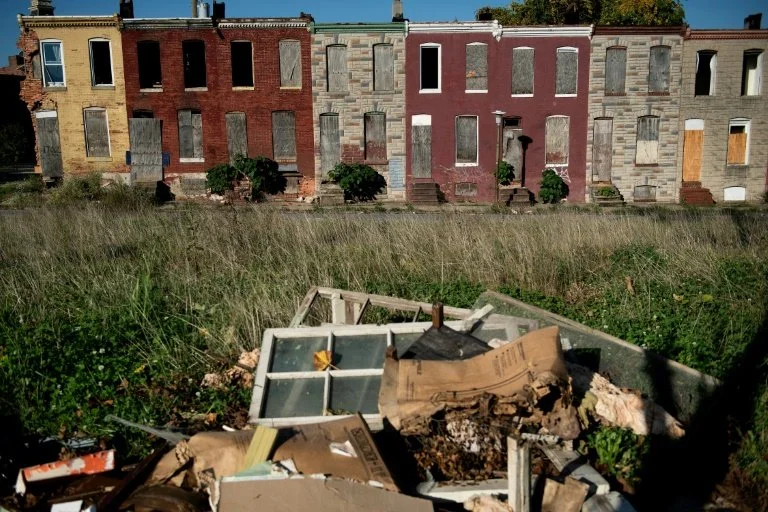
"The Black Butterfly" Racial Segregation and Investment Patterns in Baltimore
In Baltimore City, predominantly white neighborhoods receive nearly four times the investment of those that are majority black, according to a new report from the Urban Institute. The organization’s findings further emphasize the strong connection between race, place and opportunity that exists in the city.
-

Mayor Issues Directive to Address Vacant Houses
Mayor Brandon M. Scott announced an official directive to all City agencies to conduct an internal review of all operations, procedures, and processes connected to how the City government deals with vacant houses. This announcement comes after a building collapse in a fire at a privately-owned vacant house on the 200 block of South Stricker Street last week left three Firefighters dead and one seriously injured.
-
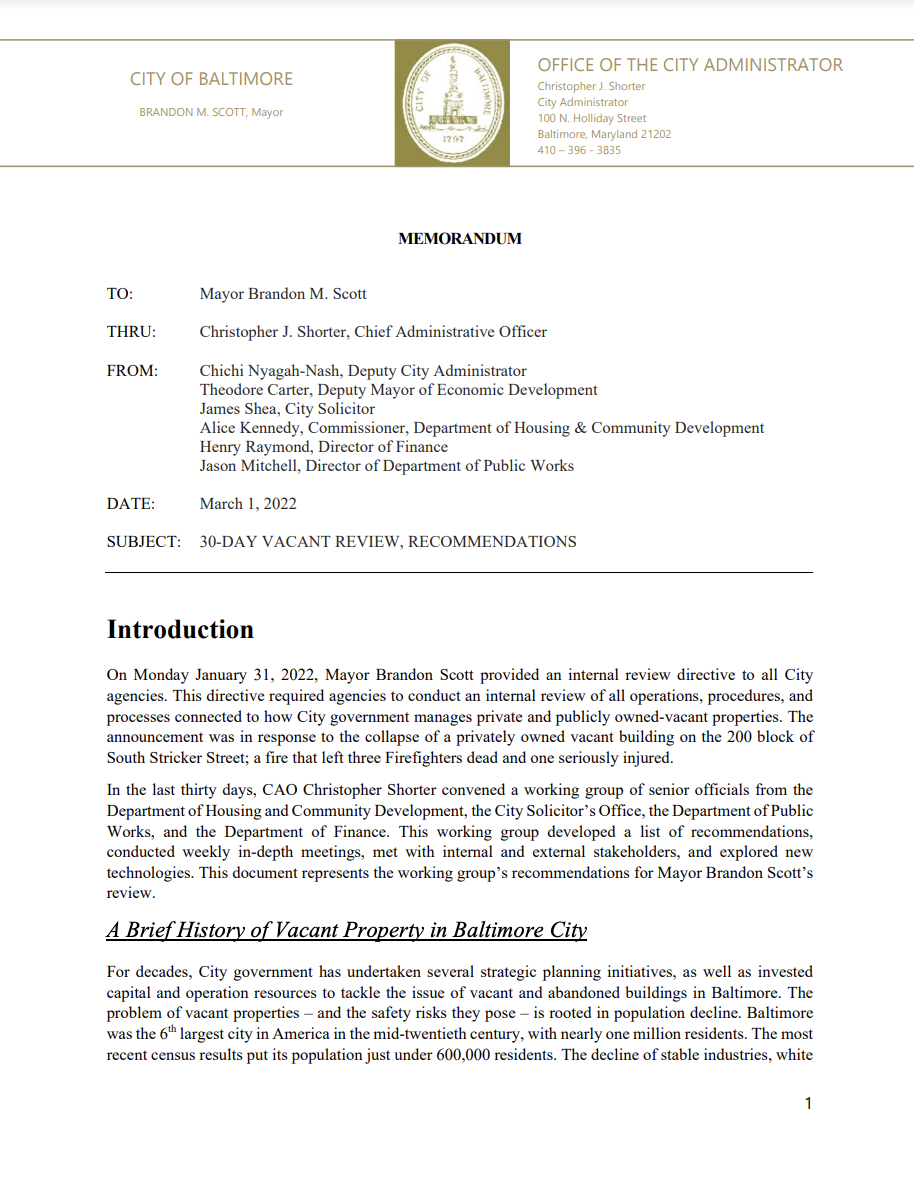
30-Day Vacant Properties Review: DHCD Recommendations
In response to Mayor Brandon Scott’s City-Wide directive to address vacant houses, DHCD provided a list of recommendations providing both short and long-term vacancy abatement and prevention strategies, along with progress reports about ongoing efforts.

